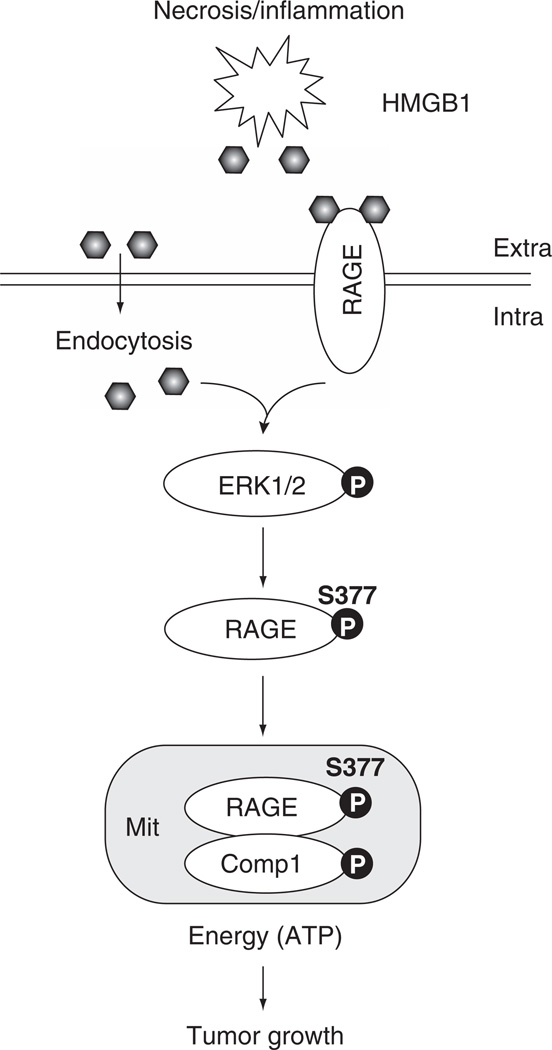Figure 6.
Model of HMGB1/RAGE interaction and regulation of metabolism. HMGB1 is released following stress/necrosis in cells as a damage-associated molecular pattern molecule in the tumor microenvironment, promoting inflammation. HMGB1 binds cell membrane RAGE or uptake into cells by a caveolin-dependent endocytosis pathway, promoting phosphorylation of ERK1/2 (p-ERK1/2), which in turn induces phosphorylation of RAGE. Phosphorylation of RAGE at Ser377 is required for its mitochondria-targeted accumulation. There it promotes phosphorylation of complex I, which is the first step in the ATP biosynthetic pathway. As shown in the summary, the HMGB1–RAGE pathway stimulates bioenergetics by enhancing ATP production in a p-ERK1/2-dependent process to sustain the increased metabolic needs and growth of tumor cells.

